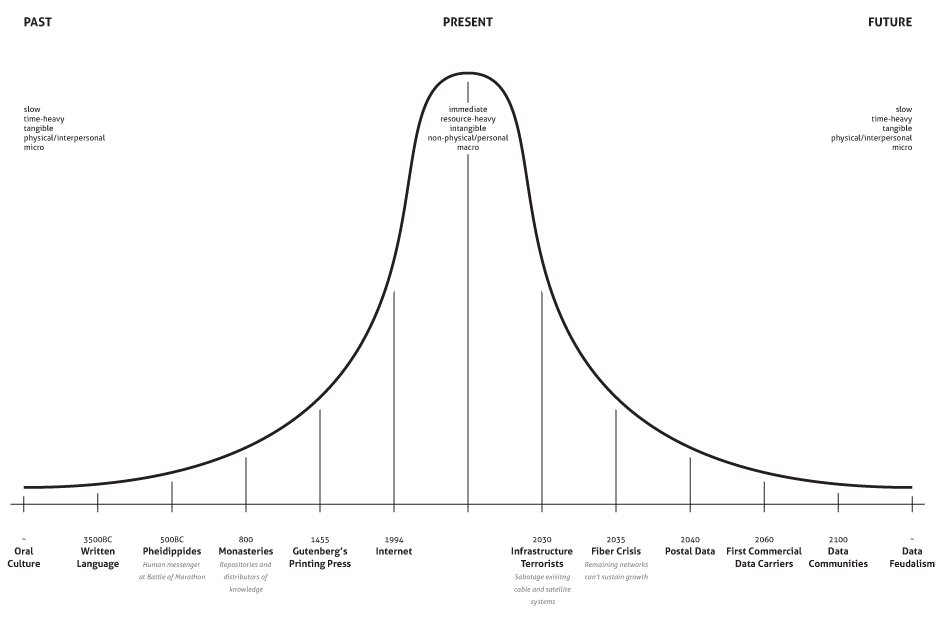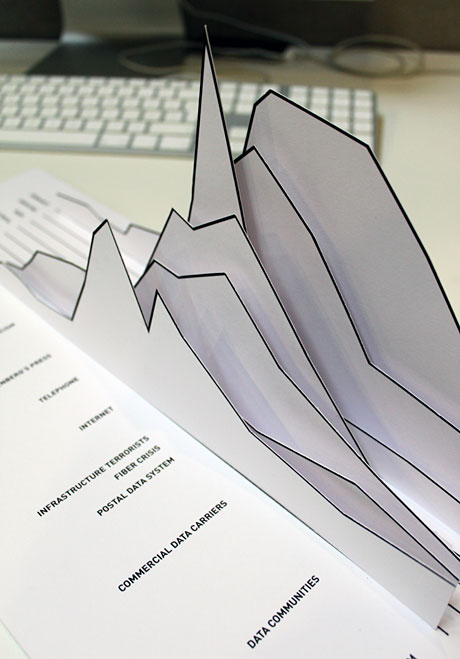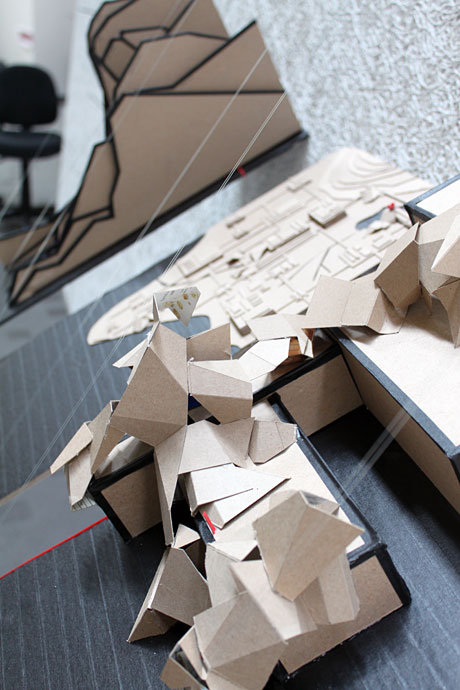
INFRA L.A., part II
- Context:
- Academic
- Date:
- Launch:
Contextualizing a Post-Fibre Future
We’ve imagined a post-fibre future where humans are both infrastructure and interface as data carriers—where networks of data communities have developed and the world is connected by local colonies of specialized knowledge.
Brief
The results of the bus tour charrette project were conceptually exciting and full of potential. For this relatively brief first project, we are now asking you to develop and refine these ideas. Each team must materialize at least one aspect of your project and engage in additional research to clarify, inform, and ground the development of your ideas.
This project was developed in collaboration with Annie Needham, Betsy Kalven, Greg Ahn and Sormeh Farhangazad.
Concept Development
In taking our INFRA L.A., part I project further, we began by researching historic and predicted trends across a wide range of fields: communications, technology, computing, medicine, world population, warfare and the environment. We then plotted these and used them to develop and refine our design fiction.

Initial draft of a timeline that creates historic context for the data carriers
Informed by our research, we speculated on some of the ways in which history’s repeating patterns might emerge. We created a timeline that saw data transmission move back from the immediate to the time-consuming; return to the tangible from the intangible; and become personal and physical again. The alternative future we were designing saw a return to traditional models of trade, nomadic lifestyles and ancient oral cultures.
In an effort to communicate the context of this data-carrier future, we materialized it in a triptych of physical models illustrating the historic timeline, urban structures and local architecture, of this alternative future of data-carriers and knowledge communities.

Early prototype of timeline
Final Concept
The intangible nature of the Internet masks its fragility, paralleling the finite nature of human life. Its infrastructure presents major points of vulnerability, particularly where it is materialized in a small number of key carrier hotels and delivered through an aging telephone and cable network.
If this frail infrastructure were to be damaged beyond repair, might humanity be realized as our only truly sustainable form of data storage? Neuroscience is advancing rapidly with recent years seeing the first microchips embedded in human brains. Quantum computing is beginning to see computing move beyond transistors to a molecular level.
In the context of current global issues and historic trends, including growing resource shortages, environmental shifts, overpopulation and infrastructure-targeting conflicts, how safe is our data and our connectedness?
We’ve imagined a post-fibre future where humans are both infrastructure and interface as data carriers—where networks of data communities have developed and the world is connected by local colonies of specialized knowledge.

Close up of finished project
[.(JavaScript must be enabled to view this email address)]{#eeEncEmail_YlIDSeWiIv}
© John Ryan 2012